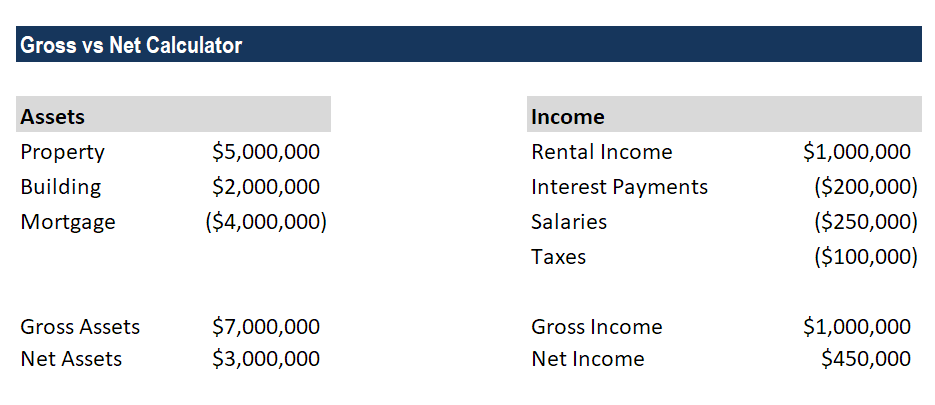Many monetary calculators also include an NPV function. "A geek like me, I have it on my i, Phone. I like to understand it's in my pocket," says Knight. Even if you're not a mathematics geek like Knight, it's helpful to understand the mathematics behind it. "Even experienced analysts might not keep in mind or understand the mathematics however it's quite simple," he states. The calculation appears like this: This is the sum of today worth of money circulations (favorable and unfavorable) for each year associated with the financial investment, discounted so that it's expressed in today's dollars. To do it by hand, you initially determine the present value of each year's projected returns by taking the predicted money circulation for each year and dividing it by (1 + discount rate).
Then include them together. That will be today value of all your forecasted returns. You then subtract your preliminary financial investment from that number to get the NPV. If the NPV is unfavorable, the job is not a great one. It will ultimately drain money from business. Nevertheless, if it's favorable, the task should be accepted. The bigger the positive number, the higher the advantage to the company. Now, you may be questioning the discount rate - What can i do with a degree in finance. The discount rate will be company-specific as it's related to how https://www.taringa.net/lynethynop/the-of-corporations-finance-their-operations-using-which-of-the-follow_4rs2c3 the company gets its funds. It's the rate of return that the investors anticipate or the expense of obtaining money. Please be cautious that you do not match your discount rate to the evaluation you wish to see. But rather, you must approach the appraisal and discount rate process as a method to poke and prod to discover the reasonable value variety of a stock. I encounter individuals who utilize our Old-fashioned Value DCF model and get in numbers to match what they wish to see. The outcome isn't good of course. Don't validate the purchase of a business even if it fits the numbers. Don't trick yourself into believing that a cheap company will yield great returns because you've utilized some cool numbers.
Not for corp finance, MBA or CFA research study. Discount rates WILL affect your evaluation, Discount rate rates are typically vary bound. You will not use a 3% or 30% discount rate. Generally within 6-12%. For financiers, the cost of capital is a discount rate to value a company. Discount rates rates for investors are required rates of returns, Be consistent in how you select your discount rate, Don't forget margin of security. A high discount rate is not a margin of safety.

To determine a financial investment's net present value (NPV), you must initially determine its discount rate factor. To put it simply, the discount element determines the present value of an investment's future worth. Learn what this indicates, how to calculate discount aspect, and how it's applied in financing below. The discount rate element formula offers a way to calculate the net present worth (NPV). It's a weighing term utilized in mathematics and economics, timeshare answers reviews multiplying future earnings or losses to figure out the accurate aspect by Have a peek at this website which the value is multiplied to get today's net present value. This can be used to items, services, or financial investments, and is regularly utilized in business budgeting to identify whether a proposition will include future worth.

The discount rate aspect and discount rate are carefully associated, but while the discount rate looks at the existing worth of future cash circulation, the discount rate aspect applies to NPV. With these figures in hand, you can forecast a financial investment's expected revenues or losses, or its net future value. As you can see from the breakdown above, there are multiple uses of the discount factor: To compute net present value, To help with financial modelling, To complete a reduced cash circulation analysis, As a result, this useful little formula could be utilized by everybody from insurer to financiers. The general discount aspect formula is: Discount Aspect = 1/ (1 * (1 + Discount Rate Rate) Duration Number) To use this formula, you'll need to find out the regular rate of interest or discount rate - What does etf stand for in finance.
Little Known Facts About What Does Ach Stand For In Finance.
You'll also need to understand the overall number of payments that will be made. You can produce a discount factor design template or table in Excel to exercise these computations, by going into the formula above with your own figures. For example, a table might look like this: B C D E F 2 Duration 1 2 3 4 3 Undiscounted Cash Circulation $100,000 $100,000 $100,000 $100,000 4 =1/1 *( 1+$ C$ 4) C2) =1/1 *( 1+$ C$ 4) D2) =1/1 *( 1+$ C$ 4) E2) =1/1 *( 1+$ C$ 4) F2) 5 0. 93 0 - What happened to yahoo finance portfolios. 86 0. 79 0. 74 This reveals the reducing discount aspect over time, whether it's an annual discount element or a shorter amount of time to show your accounting duration.
For a rate of interest of 5%, the discount aspect would be 1 divided by 1. 05, or 95%. As soon as you have your discount aspect and discount rate calculated, you can then utilize them to figure out a financial investment's net present value. Total today worth of all positive capital, subtracting the present value of negative cash circulations. Applying the rates of interest, you'll wind up with the net present value. There are lots of discount rate aspect calculators that will use these formulas, or you can use Excel for an analysis. Understanding the discount element is practical as it provides a visual representation of the effects of intensifying over time.